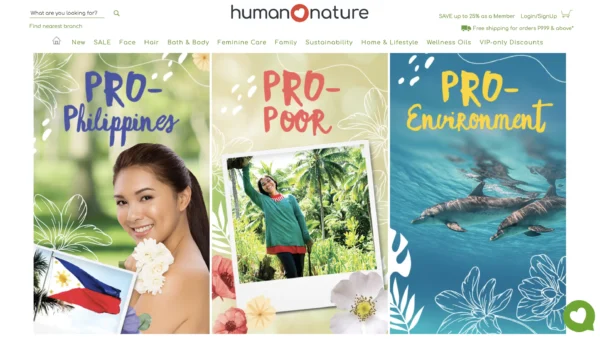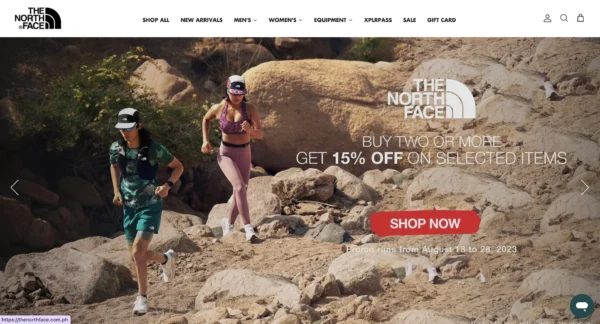How to Make Web Designs That Effectively Tell Your Brand Story and Build Trust
Author & Editor
Copywriting Team Lead
Published on: Sep 8, 2023 Updated on: May 17, 2024

Table of Contents
Your website design can make or break your customers’ experience.
If you’re conducting 100% of your business online, your website serves as your office or shop. If you have a physical storefront, your website is your frontdesk. Anything that could turn off a visitor - from the design to the slow-loading webpages - can cost you a conversion.
You need more effort than simply maintaining an online presence. Know how to make a web design that will have an impact on your visitors. Your web design should be able to share this story, create a positive customer perception, and build trust among your visitors.
Your brand story is the story behind your brand (or business). This provides a narrative of how your company started, the inspiration behind it, and how the past events are still serving your purpose today.
This article will share helpful tips on how to narrate your brand story with your web design, and the best practices you may use as reference for your own website.
Understanding your brand story.
Your brand story is “the way your brand presents itself to the world and the way the public perceives you,” wrote Emma Bullen on Medium. As mentioned earlier, this story depicts the beginnings of your brand and how your vision and core values help you navigate present-day challenges.
If done right, brand storytelling can help you develop genuine and lasting connections with your customers. You customers could relate to your purpose and believe your products and services could address their pain points.
Identify and define your brand story by going back to your purpose: Why did you go to business? What are your core values? What are the challenges and problems you want to help solve?
Then, choose the most important elements or parts in your brand story to highlight in your web design.
Neil Patel shares the three-part model in telling a brand story. Your storytelling should have a beginning, a middle, and an end.
| Three-part Brand Storytelling Model | |
| Beginning | Present the problems or pain points that you want to solve. |
| Middle | Describe how your products and services solved these pain points. |
| End | Share your successes and how you envision to move forward. |
In narrating your brand story, don’t forget to pack the emotional punch. “You can say the right thing about a product and nobody will listen. You’ve got to say it in such a way that people will feel it in their gut. Because if they don’t feel it, nothing will happen,” shared advertising legend William Bernbach.
Then, translate your message into your web design. Here are brands that effectively incorporate their brand story into their web design:
Human Heart Nature is a Philippine beauty brand established to produce high-quality, Philippine-made skincare products that would benefit grassroots communities.

The website uses soft earth palettes with quality photos that depict its core values: “being pro-Philippines, pro-poor and pro-environment”.
According to color psychology, colors can evoke emotion and create an atmosphere for a website that appeals to visitors. Understanding how different colors interact with each other is essential to creating an effective design. Human Heart Nature has masterfully adopted this web design and marketing technique.
The North Face is a US outdoor recreation brand that goes with the tagline, “Never Stop Exploring”. It started in 1966 as a climbing equipment retail store in San Francisco and has since sold apparel across the globe.

From the color theme to the images, the North Face website resonates with its target customers - climbers, mountaineers, extreme skiers, snowboarders, endurance runners, explorers.
If designing your site with powerful storytelling overwhelms you, a seasoned web development agency can help you create your brand with consistent visualization and performance throughout any device or platform available
Define your target audience.
A web design that tells a brand story not only connects with the audience - it also ensures a good user experience (UX).
But to implement a UX design, you should have a strong grasp of the needs, preferences, motivations and pain points of your audience.
There are various techniques to research and understand your target audience:
- Assess your analytics. Generate information on your site visitors via the analytics report. This report can give you an idea on the demographics of your visitors, the webpages they frequent and those they abandon right after landing, the time and day they visit, etc.
- Conduct market research. This tip is especially useful for new brands and if you’re offering a new product or service. There are tools available for this purpose such as Think With Google Research Tools which include Google Trends that provides info on real-time search trends.
- Check your competitors. Take note of your successful competitors’ best practices, their target audience, how they are enticing visitors to their sites, and the site's design and features.
After clearly identifying your audience, including their needs and preferences, your next task is to tailor your web design to appeal to them. You can do this by adopting a customer-centric web design.
Customer-centric web design is one developed around the needs, wants, and behavior of your customers. The goal is to provide the functionality and convenience that visitors expect from online businesses. Here are some important tips to remember in adopting this design:
- Keep your design clean and clutter-free. A cluttered web-design can overwhelm your site visitors, discouraging them from navigating your webpages. Limit the design elements on each page to avoid visual chaos. Too many elements and functions can also slow down your webpages.
- Use clear and concise language. Connect with your audience by using their language - one that delivers your message to them effectively. Take note of how clients describe what you do and adjust your website material accordingly.
- Customize your content. Content that doesn't resonate with your audience is just a waste of digital space. The quality and value of your content will spell out your success in digital marketing, establish your authority online, generate interest in your brand, and provide genuinely useful information to your audience.
Quality content is also key in boosting your search engine rankings, increasing traffic to your site.
So how do you proceed to mapping out a website that is UX-friendly, customer-centric and shares your brand story effectively? Know the design elements that should be incorporated into your webpages.
Design elements that tell your brand story.
Various design elements can help tell your brand story.
For instance, Human Heart Nature used color palettes that symbolizes its “pro-environment” core value. It also displays badges and awards such as the certified cruelty logo and the Ernst & Young Entrepreneur of the Year award. Without a lengthy narrative, Human Heart Nature is able to share the quality of its products and services, and its business purpose.
Here are solid tips for incorporating design elements that are consistent with the brand's story and values.
- Trust badges and or seals. A trust badge is a badge or seal that is similar to a social proof software used to alleviate potential customer hesitancy. Trust badges inform visitors that your webpage is legitimate and that any data collection and processing adhere to applicable data privacy and protection laws. The Secure Socket Layer (SSL) badge ensures your visitors that the internet connection and the information that is shared across that connection are protected.
- Awards. Awards badges allow you to share your brand and your people’s achievements without space-consuming texts. These design elements can help boost your authority and reputation as one of the best, or the best, in your industry.
- Reviews or testimonials. Reviews or testimonials are your brand’s stories from the perspective of your customers and partners. These are essential design elements since they convey an unbiased view of your brand and your products and services.
- Audio-visual content. Videos and audios can deliver messages in a concise and appealing manner. You can share your brand’s history in a 30-second clip, which is more consumable than a 1,000-word write-up.
According to a recent study, as many as 91% of consumers want to see more online video content from brands (Wyzowl, 2023). - Showing team members or key leaders. Your people are the drivers and motivations behind your brand. They make up your brand story. Adding the profiles and photos of your key people into your web design “gives a face” to your brand and makes your business appear more accessible.
Aside from Human Heart Nature, UnionBank, a Philippine commercial bank, effectively uses web design elements such as its key leaders on its website.

Similar to showing your brand’s key people, sharing information about brand ambassadors can aid in telling your brand story.
Japanese fashion retailer, Uniqlo, highlights its brand ambassadors whose values and achievements reflect the brand’ story.
More than aesthetics, you also need to consider the non-visual web design elements in preparing a web design workflow to ensure you create a UX-friendly and customer-centric website. You must consider making a clean backend code, optimizing website speed, enabling mobile view, and incorporating SEO-boosting features in your website.
Knowing how to code a website that functions faultlessly, loads swiftly, and can be navigated efficiently impacts how your audience perceives your brand.
All set with the planning phase of your web design? Check out this web design checklist to set you off to the next stage.
Build trust through web design.
As mentioned earlier, your brand story presents your brand to your world by sharing a cohesive narrative of your beginnings, the inspiration behind your establishment, and how the past events and challenges are still serving your purpose today.
By introducing your brand in a meaningful way, you can build trust among your website visitors.
As Neil Patel wrote on his blog, “Stories produce trust. But not just any story will do. You must tell a story that has the right features — features that produce successful neural coupling, plus those which exhibit integrity-building features.”
Use design elements to establish credibility and trust with these tips:
- Keep your message short and simple. Simple stories can have an immense impact if told well. If you want to share a lot of things like your long history, the notable events that propelled your business, etc., consider creating easily digestible soft-form video design elements.
- Appeal to emotions. Remember that you’re connecting with humans and not robots. Choose web design elements and content that hit the emotional quotient. But remember to keep it real and honest. Don’t make up stories that everyone knows are not true.
- Highlight badges of approval. Trust badges, awards and the like are design elements primarily for building credibility and trust. With a security badge on your check-out page, you guarantee to your customer that their transaction and data are safe and secure.
Brands that effectively use design elements that establish credibility and trust include e-commerce platforms such as Barnes & Noble, Lazada and Shopee.
Testing and measuring success.
How do you know if the web design elements you incorporated into your website are effective in telling your brand story, promoting good UX experience and building trust for your brand? You test and measure your success.
Testing and measuring the effectiveness of web design lets you know which are working and which are not. These can help you make decisions about content marketing and ads placement. By analyzing your web performance, you can explore new opportunities such as the possible introduction of new technologies.
Here are tips for testing and measuring the success of your web design:
- Check your website ranking on top search engines. Being among the top results for your relevant keywords suggests that you’re meeting the quality and relevance standards of the search engine. If you’re easily searchable, you’re doing it right.
- Use available testing and measuring tools. Work smart. There are tools available to help you know if your website is doing well. Check out Crazy Egg which offers a menu of testing and measuring tools such as heatmaps, A/B testing and traffic analysis.
- Work with a competent web development agency. Is a post-web development assessment too much work? You can work with a seasoned team of specialists from a web development agency. They have the skills and technologies to help you detect the weaknesses and strengths in your web design.
Key takeaways
A web design can make or break your customer’s experience on your “online storefront”. You may either win or lose a potential conversion. So, it’s a must that you learn the elements of a solid web design.
- Adopt a web design that tells your brand story, builds trust and promotes good UX effectively.
- In telling your brand story, remember to stay genuine and honest. Keep your message short and simple.
- Leverage on the expertise of a web development agency. This is especially recommended if you’re new in web design and development, or have no knowledge on it whatsoever.
If you have any other questions, send us a message via our Facebook, X, and LinkedIn accounts.
Make sure to subscribe to our newsletter as well for more web design tips.
